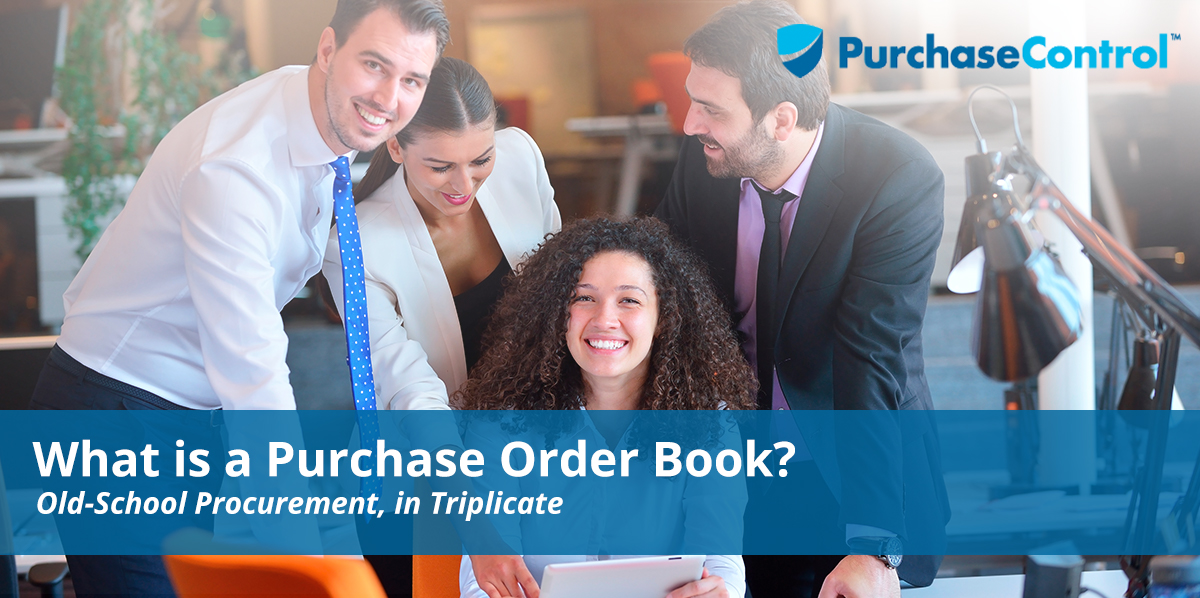It used to be at the center of the purchase order process. But today, the purchase order book is more of a relic than a resource. If your organization is still relying on paper-based procurement, you might be sacrificing not just time and labor, but adding needless risk exposure and waste to your workflows.
In an age of digital disruption, carbonless copies and manual processing leave you at a distinct disadvantage. Find out how to leave paper-based business forms and record keeping behind, and streamline your purchase order processes.
Buying in Triplicate: Purchase Order Books
The traditional purchase order book (sometimes called a carbonless purchase order book) is a pad of individual 2-part carbonless (sometimes 3-part carbonless) purchase order forms, each with its own unique purchase order number. The white original lies atop canary duplicates (or duplicates of another color, although yellow is the most common), onto which product information and other details of the PO are transferred when the top form is filled out using a pen or a typewriter.
When the form is filled out (most often using information taken from a purchase requisition), one copy is retained for the buyer’s records, while the other copies are distributed to the vendor and, in some cases, the accounting and shipping/receiving departments for matching against the vendor’s invoice and shipping documents respectively. If more stakeholders are involved and want a copy for their records, additional copies of the PO will be created and filed to provide a permanent record of the transaction in each party’s files.
In addition to the multiple copies of the purchase order itself, a manual purchase order workflow can creates a lot of other related documents. These can include:
- The original requisition filed by the buyer with the purchasing department
- Quotes
- Order acknowledgements and clarification requests from the vendor,
- Faxes or paper memos documenting communication surrounding the transaction or additional product details
- Work orders created to address corrections or modifications
- Packing slips
- Invoices
- Tax forms
- Additional triplicate copies of the purchase order created for modifications or corrections
Whether they use two-part or three-part forms, if your company processes any significant number of POs each year, all that paper and drudgery can quickly pile up into a costly mountain of needless expense. And that doesn’t include wasted paper due to human error or the office supplies that get binned as part of the two pounds or so of mixed paper trash generated by the average office worker every single day.
“It’s time to reduce your carbon (paper) footprint. Purchase order books, like butter churns and buggy whips, hold an important place in history—but not in the modern workplace.”
Beyond the Printed Page: Automating Your Purchase Orders
Escaping the triplicate trap set for your company’s bottom line by paper purchase orders doesn’t have to be difficult—although it will require modernization, updates to technology and internal business processes, and, for many small businesses, a cultural shift. But the gains to be made with purchase order automation, including greater efficiency, higher productivity and competitiveness, and a much smaller environmental footprint, are simply too powerful to ignore.
Benefitting from these improvements begins with integrating purchase order software into your workflow. Using artificial intelligence (AI) and machine learning, digital procurement packages help you break free from the wasteful and time-consuming manual PO prison and provide:
- More agile, flexible procurement. Digital procurement gives you access to automated workflows, allowing you to create standard practices that are automatically compliant with both internal policy and industry/legal requirements while targeting maximum savings opportunities. You can also create contingency workflows for periods of high demand or as a bulwark against unforeseen supplier problems. The same ability makes incorporating contingencies for absences, unusual spend amounts, or one-offs into your approval workflows much easier, too.
- Greater departmental and organizational efficiency. Bringing together cloud-based data storage and management with detailed, hierarchical workflows, you can speed and streamline all of your procurement tasks, including your PO process. Data entry and manual paper-pushing are replaced by automatic population of product information from the central cloud server, and integration with your contract management, inventory management, and supply chain management functions allows every purchase order to be tailored for the terms, conditions, and contractual bonuses available from preferred vendors for specified goods and services. Access from both desktop clients and mobile apps, including automated reminders and alerts, slashes the time needed for approvals by removing bottlenecks, too.
- Greater value with every purchase. Freed from low-value data entry and exemption chasing, your staff can focus their time and skills on more strategic tasks. In addition, full data transparency and contract/supplier management integration means every buy can be laser-focused for optimal return on investment (ROI) and lowest total cost of ownership (TCO).
Say Goodbye to Paper and Hello to Productive Procurement
It’s time to reduce your carbon (paper) footprint. Purchase order books, like butter churns and buggy whips, hold an important place in history—but not in the modern workplace. Switching to digital procurement will give your organization the boost it needs to improve profitability and productivity while cutting costs and waste.
Turn a New Page in Your Procurement and Digitize Your Purchase Order Book
Find Out How








